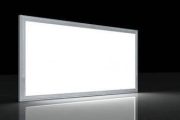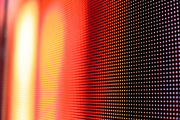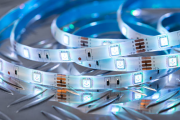1. Adopt Large Area Chip Package
Replace the existing small chip package of 0.3 x 0.3 mm2 with a large chip of 1 x 1 mm2. In the case that the chip injection current density cannot be greatly improved, it is a major technology development trend.
2. Flip Chip Technology
Solve the problem of light blocking by electrodes and poor heat dissipation of sapphire, and emit light from the surface of the sapphire substrate. Make a thick layer of silver reflector on the p-electrode, and then bond with the bump on the base through the electrode bump. The base is made of Si material with good heat dissipation, and an anti-static circuit is made on it. According to the results of Lumileds, flip-chip increases the light extraction efficiency by about 1.6 times. Chip heat dissipation has also been greatly improved. The thermal resistance of high-power light-emitting diodes using flip-chip technology can be as low as 12-15°C/W.
3. Metal Bonding Technology
This is an inexpensive and efficient way to make power LEDs. It mainly adopts metal-to-metal or metal-to-silicon bonding technology, and uses silicon wafers with good thermal conductivity to replace the original GaAs or sapphire substrates. Metal-bonded LEDs have strong heat dissipation capabilities.
4. Develop High-power UV LEDs
UV LEDs paired with tri-color phosphors provide another direction. The color temperature stability of white light is good, making it suitable for many high-quality applications (such as energy-saving desk lamps). Although such a technology has various advantages, it still has considerable technical difficulties. These difficulties include the selection of UV wavelengths for matching phosphors, the difficulty of UV LED fabrication, and the development of UV-resistant packaging materials.
5. Develop New Phosphors and Coating Processes
Phosphor quality and coating process are key to ensuring the quality of white LEDs. The technical development trend of phosphors is to develop nanocrystalline phosphors and surface-coated phosphor technologies. In the coating process, the phosphor plate technology with uniform phosphor powder is developed, and the phosphor powder and packaging materials are mixed.
6. Develop New Packaging Materials
High thermal conductivity material
Develop a new material with high thermal conductivity mounted on the bottom plate of the LED chip, thereby increasing the operating current density of the LED chip by about 5 to 10 times. According to the current trend, the choice of metal base material is mainly composed of materials with high thermal conductivity, such as aluminum, copper and even ceramic materials. However, the thermal expansion coefficients of these materials and the chip are very different, and if they are in direct contact, it is likely to cause reliability problems due to the stress generated between the materials when the temperature rises. Therefore, an intermediate material with both a conductivity coefficient and an expansion coefficient is generally added as a spacer between the materials.
In terms of solder, it is necessary to meet environmental protection requirements and develop lead-free low melting point solder. And further development of higher thermal conductivity and less stress on the LED chip solder is another important issue.
High light transmittance material
The original LED has a lot of light that cannot radiate from the LED chip to the outside due to refraction. The researchers developed a new LED. On the surface of the chip, there is a layer of silicon-based transparent resin whose refractive index is between the air and the LED chip. By angling the surface of the transparent resin, light can emit efficiently. This move can increase the luminous efficiency to about 2 times that of the original product.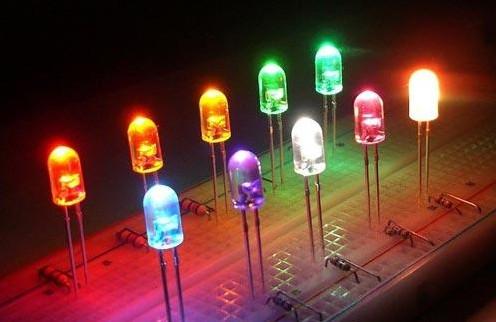
At present, for traditional epoxy resins, which have high thermal resistance and poor anti-ultraviolet aging performance. It is also a trend to develop encapsulation resins with high transmittance, heat resistance, high thermal conductivity, UV and solar radiation resistance and moisture resistance.
7. Multi-chip RGB LED
Technicians make white light-emitting diodes by packaging chips that emit red, blue, and green directly together to form white light.
Its advantage is that it does not need to be converted by phosphor powder. And is directly prepared into white light by three-color crystal grains. In addition to avoiding the loss of phosphor conversion and obtaining better luminous efficiency, it is also possible to control the light intensity of the three-color LEDs separately to achieve a full-color discoloration effect (variable discoloration temperature). And the choice of intensity can get better color rendering.
Light-emitting diodes using multi-chip RGB LED packages are likely to become one of the main light sources to replace the backlight in the current LCD backlight module using CCFL.
8. Multi-chip Integrated Packaging
At present, there are still problems such as uniform light emission and heat dissipation in large-sized chip packages. That need to be solved urgently. Power LEDs that use conventional chips for high-density combined packaging can obtain higher luminous flux. And are a feasible and promising power LED solid light source.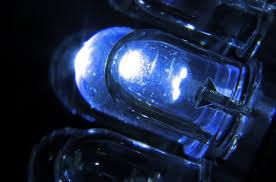
The small chip technology is relatively mature. And various aluminum substrates with high thermal conductivity and insulating interlayers are convenient for chip integration and heat dissipation.
9. Flat Modular Package
Flat modular packaging is another development direction. The advantage of this packaging is that the modules make up the light source. And its shape and size have great flexibility. It is very suitable for indoor light source design. Cascading and on-off protection between chips is a difficult point. Large-scale chip integration is a feasible way to obtain higher power LEDs. The integration of the flip-chip structure may have more advantages.




